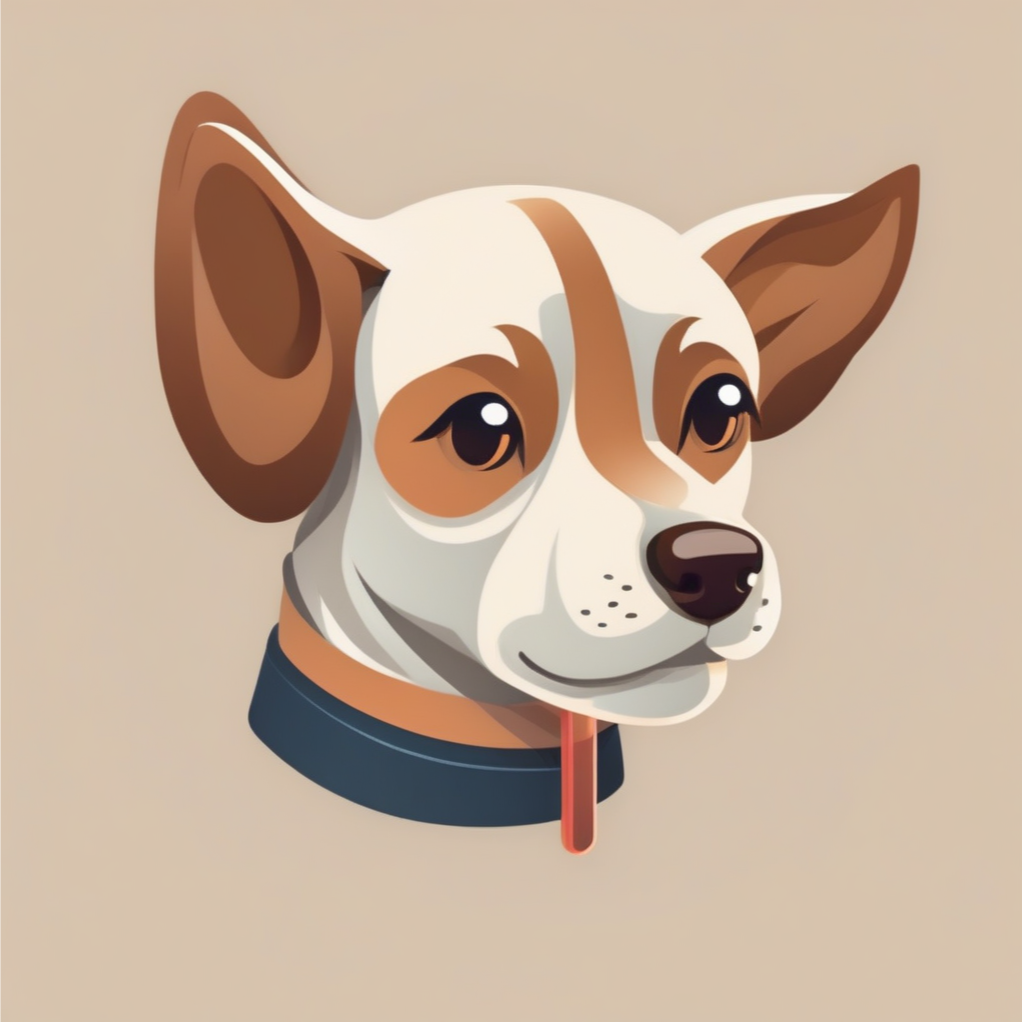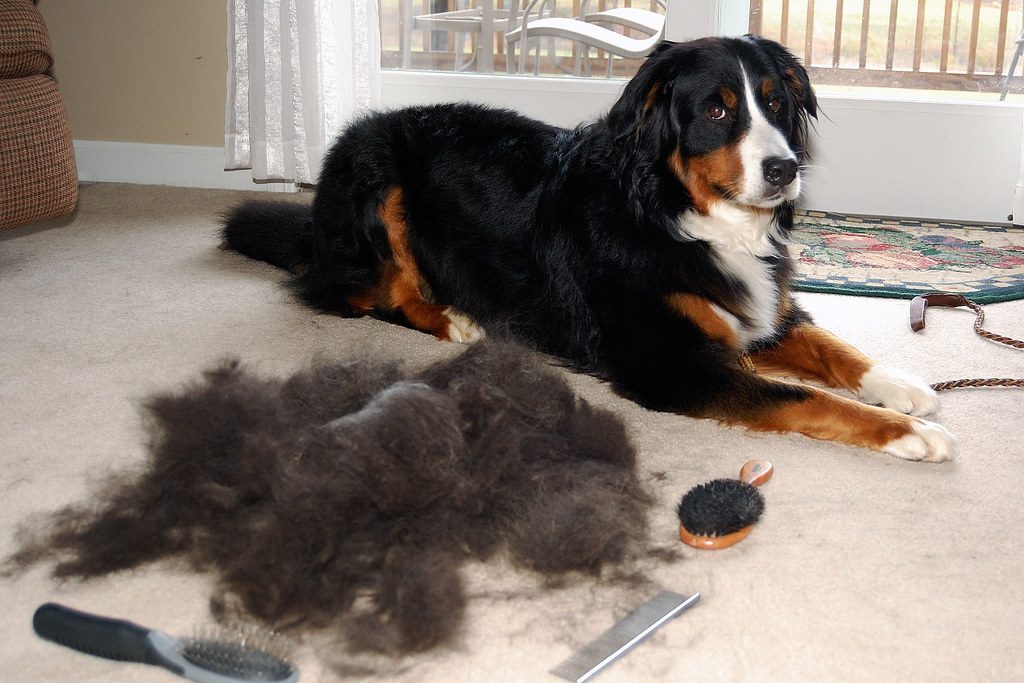Dogs, our loyal companions, come with their share of quirks, and shedding is one of those natural phenomena that can puzzle even the most seasoned dog owners. In this comprehensive guide, we’ll delve into the intricacies of dog shedding, aiming to provide you with the knowledge and tools to not just cope but thrive in the face of this seemingly incessant shedding.
Understanding why dogs shed is crucial for any pet owner. Shedding is not a flaw in your dog; it’s a natural process deeply rooted in their biology. Contrary to common misconceptions, shedding is not indicative of poor health or a lack of grooming. It’s a testament to your dog’s overall well-being and the functioning of their skin and coat.
In this guide, we aim to demystify shedding, offering practical insights into the why, when, and how of this natural occurrence. By the end, you’ll be equipped with the tools and knowledge to not only manage shedding effectively but also to appreciate it as an integral part of your canine companion’s life.
Understanding Dog Shedding
Why do dogs shed? This intriguing inquiry frequently dances through the thoughts of devoted dog owners. Shedding, a captivating biological process, is deeply rooted in the intricate tapestry of a dog’s genetics. It unveils itself in a myriad of ways, presenting a unique spectacle influenced by diverse factors such as coat type and individual genetic makeup. Delving into the intricacies of shedding not only demystifies this natural occurrence but also fosters a deeper connection with your canine companion.
Embark on a journey through the diverse world of canine coats, where each breed, from the majestic Siberian Husky with its luxurious double coat to the sleek Dalmatian sporting a single-layered coat, boasts a distinctive shedding signature. Each coat type unravels a story, a testament to the intricacies of canine genetics. Understanding these nuances becomes the key to embracing shedding as an integral and healthy facet of your dog’s life.
The world of shedding in dogs goes far beyond just different coat types; it’s a complex tapestry woven with intricate patterns. Envision this: some dogs elegantly release small tufts of fur consistently throughout the year, a perpetual cascade of fluff. Meanwhile, others partake in a seasonal shedding ballet, a choreography intricately influenced by the shifting seasons. Understanding your dog’s unique shedding rhythm isn’t merely a whimsical exercise; it’s a vital aspect of creating a grooming routine that works. Think of it as your compass, guiding you through the peaks and valleys of your furry friend’s shedding journey. This knowledge ensures you navigate this natural process with finesse and a profound understanding, particularly during the shedding season for dogs. Embrace the beauty of your pet’s seasonal dog shedding, and let your grooming regimen harmonize with the rhythm of nature.
Factors Influencing Shedding
Several key factors influence the shedding patterns of your dog – their diet, overall health, age, hormones, and the environment they live in. A meticulously balanced diet, abundant in nutrients like Omega-3 fatty acids, is fundamental for fostering a vibrant skin and coat. Regular veterinary check-ups are pivotal in pinpointing and managing health issues that could be intensifying shedding.
Consider the age and hormonal dynamics of your furry friend. Puppies may undergo shedding as they transition from their puppy coat, while older dogs may encounter alterations in their coat due to hormonal fluctuations. Don’t overlook the impact of environmental elements such as climate and living conditions, as they significantly contribute to shedding.
Tools and Techniques for Managing Shedding
Grooming is your secret weapon in the battle against shedding. Investing in the right tools, from brushes and combs to deshedding tools, is essential. The frequency of grooming sessions depends on your dog’s breed and shedding pattern.
Bathing is another critical aspect of grooming. Using appropriate shampoos and ensuring thorough drying afterward can contribute to a healthy coat. Additionally, dietary adjustments, including Omega-3 fatty acid supplements, can enhance the condition of your dog’s skin and reduce shedding.
Regular veterinary check-ups provide a holistic approach to shedding management. Detecting and addressing potential health issues early on can significantly impact shedding.
Controlling Shedding in Different Breeds
Recognizing the diversity in shedding patterns among dog breeds is essential. Certain breeds, such as the Poodle, are known for minimal shedding, whereas others, like the German Shepherd, are infamous for their prolific shedding. Adapting your grooming practices to align with the specific needs of your dog’s breed can significantly enhance your ability to manage shedding effectively.
By incorporating breed-specific grooming practices into your routine, you not only address shedding concerns but also contribute to the overall well-being and comfort of your furry companion. This targeted approach ensures that you are providing the most effective care tailored to your dog’s individual needs, promoting a healthy coat and minimizing the impact of shedding on your living space.
Managing Dog Hair Around the House
Achieving a seamless coexistence with a furry companion that sheds demands a few tweaks to your daily regimen. Consistent cleaning and meticulous vacuuming emerge as pivotal strategies to curtail the pervasive presence of dog hair within your abode. Opting for furniture specifically designed for pet-friendly resilience and establishing clearly demarcated areas exclusively for your canine companion contribute significantly to mitigating the hurdles associated with dog hair management.
Dealing with Excessive Shedding
Shedding, a natural occurrence in pets, can serve as a subtle indicator of their well-being. However, an abundance of shedding might hint at underlying health concerns. If you notice unusual signs like bald patches or alterations in the skin, it’s crucial to seek professional advice from a veterinarian promptly. Early identification not only enables swift intervention but also enhances the effectiveness of shedding management. Regular veterinary check-ups contribute to overall pet health and ensure a thriving coat condition.
Shedding and Allergies
Navigating life with allergies adds an extra layer of complexity when dealing with shedding. It’s crucial to grasp the prevalent allergens linked to shedding and adopt effective tactics to reduce their impact. Incorporating tools like air purifiers and opting for hypoallergenic breeds significantly enhances the overall living experience for those prone to allergies.
Tips for Dog Owners
In the delicate art of managing shedding, patience and unwavering consistency emerge as virtuous allies. View not the grooming sessions as mere chores but as golden opportunities to weave stronger bonds with your furry companion. Amidst the seemingly endless cascade of fur, discover the silver lining of pet ownership, transforming shedding into a pathway to a more enriched and fulfilling experience.
Conclusion
In conclusion, dog shedding is a natural and inevitable part of having a canine companion. By understanding the factors influencing shedding, employing the right tools and techniques, and embracing the uniqueness of different breeds, you can navigate shedding with confidence. Shedding is not a hindrance; it’s a reminder of the dynamic relationship between you and your four-legged friend. So, equip yourself, embrace the process, and enjoy the journey of dog ownership in all its shedding glory.
FAQs related to dog shedding:
- Why is my dog shedding so much? If you’re wondering why your dog is shedding excessively, it could be attributed to factors such as poor-quality diet, using the wrong shampoo, presence of parasites, stress, or underlying health issues.
- What months do dogs shed the most? For dogs that shed seasonally, you’ll notice that most shedding occurs in the spring and fall. In the spring, your dog’s coat will become lighter, in preparation for the warm weather. Similarly, in the fall, in preparation for winter, you will see a change in your dog’s coat and a higher incidence of shedding.
- How can I reduce my dog’s shedding? To minimize your dog’s shedding, focus on managing seasonal changes in their coat. During spring and fall, expect increased shedding as your dog adapts to temperature variations. Brushing regularly and providing a balanced diet rich in omega-3 fatty acids can help maintain a healthier coat, reducing shedding. Additionally, consider consulting your vet for personalized advice on grooming and dietary supplements.
- Why is my dog losing so much fur? It could be due to various reasons. Generalized hair loss may signal mange or a bacterial infection. Look out for patches of hair loss, as they might indicate conditions like ringworm, bacterial infection, mites, or mange. Additionally, pay attention to the rump and tail base area, as hair loss there could be attributed to a flea allergy.
- How often do dogs shed? Dogs shed consistently throughout the year, with variations based on breed and coat type. Breeds like Poodles and Boston Terriers, featuring a single coat, tend to shed lightly year-round. In contrast, double-coated dogs experience the heaviest shedding in the spring and fall seasons.
- When do dogs blow their coats? Dogs “blow their coats” during shedding seasons, usually in the spring and fall, when they shed a significant amount of fur.
- When do dogs stop shedding? Dogs typically undergo a shedding cycle influenced by factors such as breed, age, and health. Generally, most dogs shed throughout the year, but the intensity may vary. For specific breeds, shedding may be more pronounced during certain seasons. In terms of when dogs stop shedding, it’s essential to note that individual dogs may vary. While some breeds may shed less as they age, there isn’t a definitive point when all dogs completely stop shedding. Regular grooming practices and a healthy diet can contribute to minimizing shedding for individual dogs.

